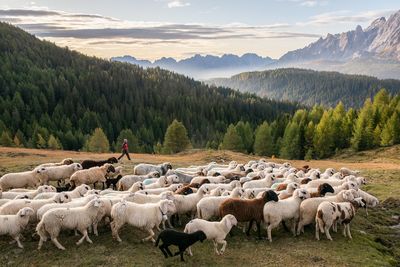STUDIO ETH Zürich
Spring 2023
AtlasHeritage & ProtectionRobert Bourke, Diana Strässle, and Michel Zalis

Not far from the ice stretches, full of fodder-rich pasture,
A fertile hillside stretches its broad back;
Its gentle slope gleams with ripening grain,
And its hills are heavy with a hundred herds.
The near object of different zones
Only a narrow valley separates, where cool shadows dwell.
Here a steep mountain shows wall-like peaks,
A forest stream rushes through and falls upon fall.
Albrecht von Haller, Die Alpen, 1729.
This atlas explores the system of agricultural Policies as an essential mechanism for protecting the swiss landscape. Subsidies, mainly represented as direct payments, are designed as economic incentives to ensure quality standards for agricultural land, farmers, biodiversity, and food supply. Embedded in a historical relation to the land, subsidies affect landscapes, nutritional conditions, emotions, and ideological frameworks, reflecting to some extent pressing issues of society.
Idyllic imaginaries of Switzerland cultivate a symbolism of an ideal landscape supported by its history, labour, and nature. The protection of this cultural landscape crosses several symbols that constitute Swiss national identity: from the Alps to traditional agriculture, from food self-sufficiency to political neutrality, and from nature protection to the preservation of the urban core.
This atlas offers a possibility to gaze at the system of subsidies as one of the backbones of Swiss society, discussing its contradictions of protecting biodiversity while fostering productivity. More than a complex and often contradictory system that supports national agriculture, direct payments to farmers are territorial protocols for designing the landscape.